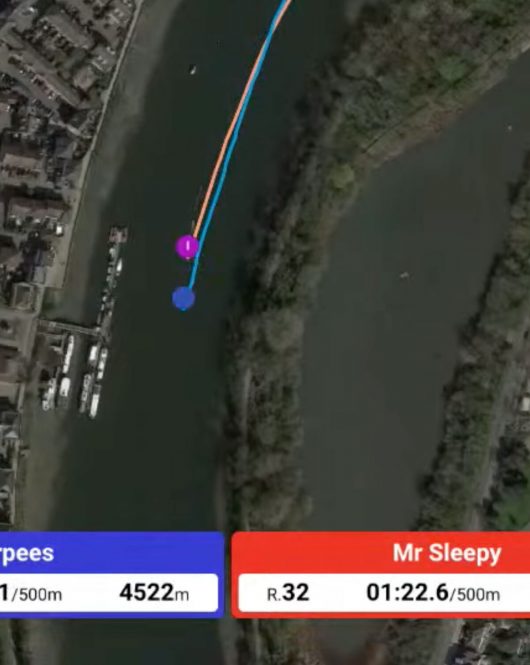In the world of sports performance and fitness, training load is a powerful concept that helps athletes and coaches strike the perfect balance between improving fitness, avoiding overtraining, and reducing injury risk. But what exactly is training load, and how do we measure it effectively? In this article, we’ll dive into the science behind training load, discuss why it’s important to track, and explore the best methods for measuring it—particularly focusing on heart rate and wattage. Finally, we’ll highlight the limitations of using speed to measure external load, especially in outdoor conditions where weather and terrain can skew data.
What is Training Load?
Training load refers to the overall stress an athlete places on their body during training. It encompasses all aspects of a workout: intensity, duration, and frequency. In other words, it’s a measure of “how hard” and “how much” an athlete is working over time. But training load goes beyond raw effort—it’s a critical data point that helps athletes achieve their fitness goals efficiently and safely. By understanding and managing training load, we can fine-tune the balance between exertion and recovery, reducing the risk of overtraining while maximising the rate of improvement.
Why is Training Load Worth Tracking?
Tracking training load has multiple benefits:
- Injury Prevention: Scientific studies have shown that rapid increases in training load are associated with higher injury risk. Monitoring training load helps coaches identify when athletes may be at risk of overuse or overload.
- Performance Optimization: Tracking allows for more precise training adjustments, helping athletes reach peak performance without the fatigue or burnout that can come from overtraining.
- Understanding Adaptation: Training load data provides insight into how athletes adapt to their programs over time, allowing coaches to tailor future training to each athlete’s unique response.
Acute vs. Chronic Training Load: Finding the Right Balance
One of the key frameworks in tracking training load is understanding the relationship between acute (short-term) and chronic (long-term) load. This balance, often measured using the Acute:Chronic Workload Ratio (ACWR), is a well-researched way to gauge an athlete’s preparedness for training while reducing injury risk.
- Acute Training Load (ATL): The workload accumulated over a short period, typically a week. It reflects how hard an athlete has been training recently.
- Chronic Training Load (CTL): The workload accumulated over a longer period, often around four to six weeks. It represents an athlete’s overall fitness foundation and conditioning level.
The ACWR is a ratio between these two values. Studies have found that keeping the ACWR within a range of approximately 0.8 to 1.2 is optimal for maximising training volume whilst reducing the risk of having to modify training. Ratios above 1.5 indicate a sharp increase in workload, which can decrease your ability to keep trainign at an optimal level.
Measuring Internal Load: The Role of Heart Rate
Heart rate is a reliable, well-researched measure of internal load, which reflects the body’s physiological response to training. Heart rate data is often collected using monitors worn on the chest or wrist, capturing real-time exertion levels. Despite its limitations it is a practical and inexpensive way to monitor athletes training.
To quantify internal load, many professionals use Session Rating of Perceived Exertion (sRPE), which multiplies an athlete’s perceived effort (e.g., on a scale of 1 to 10) by session duration. However, heart rate can add precision to sRPE, capturing the cardiovascular effort more objectively. For example, an athlete’s heart rate might reveal increased physiological strain, even if their perceived effort is lower, which is particularly useful for monitoring fatigue or adapting workouts in real-time. Plus it is somewhat difficult in a team environment to collect RPE in a regular and reliable fashion.
Measuring External Load: Why Wattage is Preferable Over Speed
Wattage is one of the most accurate ways to measure external load, or the actual physical output of an athlete. Using a power meter (common in cycling and more recently in rowing), wattage data represents the mechanical energy an athlete produces, which is unaffected by environmental factors like wind, terrain, or temperature. This makes wattage a reliable measure of true workload across different training conditions.
Speed, while often used as a proxy for external load, has significant limitations:
- Environmental Influences: Weather factors like wind and temperature can impact speed. Headwinds slow athletes down, requiring more exertion to maintain the same pace, while tailwinds can artificially increase speed without an added workload. Using speed alone might under- or overestimate training load depending on these conditions.
- Terrain Variations: Hills and slopes naturally alter speed. Uphill sections slow down athletes, even if they’re working hard, while downhill segments might increase speed without requiring much additional effort. In these cases, speed doesn’t accurately reflect the athlete’s actual workload.
- Surface Differences: Different surfaces, like grass, sand, or pavement, also affect speed, especially in sports like running. Moving on soft or uneven surfaces may slow the athlete down, even though the exertion remains high. Speed in such conditions won’t provide a true measure of external load.
Wattage provides a direct measurement of power output, allowing for consistent comparisons across varied training environments. In other words, wattage accounts for the physical work done by the athlete, regardless of the external conditions that can make speed misleading.
How Training Load is Reported to Athletes and Teams
Effectively reporting training load is essential for helping athletes and coaches make informed decisions. Typical reports include:
- Weekly Totals: Summing up both acute and chronic loads to track overall volume.
- ACWR Ratios: Highlighting the relationship between short- and long-term workloads to flag potential risk zones.
- Visual Indicators: Graphs, dashboards, and “traffic light” systems (green, yellow, red) are often used to represent safe, cautionary, and high-risk zones for training loads.
Some systems even incorporate machine learning to analyze training load trends and predict potential injury risks, allowing for more proactive load management.
Training History: How It Impacts “Too Much” Load
Understanding an athlete’s training history is key to interpreting what constitutes “too much” load. Athletes with a long training history and high chronic load are generally better conditioned to handle increases in intensity. They may be able to sustain higher loads without adverse effects, whereas newer or less conditioned athletes face a higher risk of overload.
For example, during an intense training camp, athletes with a solid fitness base might handle the increase in load, but those with limited backgrounds are more likely to experience strain or injury. By considering training history, coaches can more accurately personalise training loads, ensuring each athlete progresses safely.
Bringing It All Together
Training load is a cornerstone of high-performance training, and accurately measuring and tracking it allows athletes and coaches to avoid injury, optimize performance, and maintain a balanced approach to fitness. Heart rate and wattage offer reliable insights into internal and external loads, respectively, making them powerful tools in the modern sports scientist’s toolkit. By using these methods, rather than relying on speed, which can be skewed by environmental factors, athletes gain a clearer, more consistent view of their true workload.
Ultimately, by understanding training load and applying metrics like the ACWR ratio, athletes and coaches can create safe, effective, data-driven training programs that bring them closer to peak performance without compromising their long-term health.
What if I am more Serious About Tracking Training Load
Why not have a read of some of our other blogs on this topic:
View more content like this
Data, Performance & Analytics

Ludum live streams The Boat Race Trial Eights 2022
It’s no secret that Ludum was born from the rowing community, we were originally called Rowe.rs after all! But despite the fact that we now
Data, Performance & Analytics
Why do you Need an Indoor Rowing Training App?
Following on from the post I did last week about indoor rowing workouts, one of the of the things I find particularly exciting about working
Data, Performance & Analytics
Why use Biomechanics?
Dr. Conny Draper is the world leading expert on Biomechanics in Rowing. Here she concentrates on the three main areas of focus within the rowing


